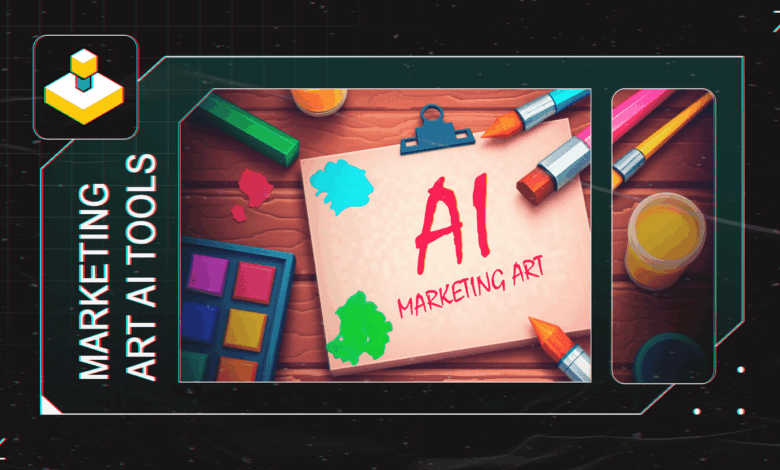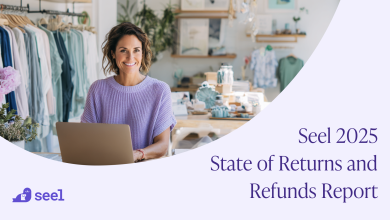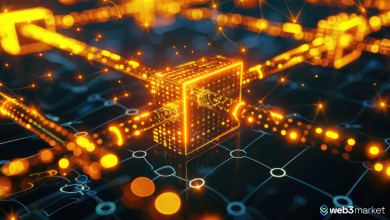
AI helps marketing designers at a video gaming company optimize their workflow, saving up to 60% of their time. Here’s how the team uses AI in marketing to boost creativity and efficiency.
As a marketing art team at a video gaming company, we produce art for external platforms, marketing campaigns, marketplaces, Steam, and social media. A vast flow of content to be reviewed and shared was the reason we started using different AI tools in our workflow.
We have a dedicated video production team and a promo art team for static creatives, each using different AI tools to improve their work and increase efficiency.
We’ve streamlined how we create background images, icons, and animations for videos. Integrating AI into video production and promotional art reduces 50-60% of the time spent on marketing creatives.
To create promotional art, we pre-render a 3D scene, then finalize the material by hand-drawing objects and adding post-processing. With the introduction of AI in marketing, we can now generate most of the environment automatically and to skip the labor-intensive steps of setting up and rendering the scene entirely, replacing hours of work with just minutes of AI-driven generation.
Now, we use AI to generate a background instead of building it from scratch in 3D—that’s half the battle won. This allows us to focus more on refining the image in graphic editors, adding cool effects, and making the final result look even better.
AI in Video Production
The video production team uses various AI tools, combining them in ways that save time and open up new opportunities.
- Runway adds movement and effects to static images, like weather elements—think lightning or rain—or subtle zooms to set the mood. It lets us experiment with video formats we previously avoided because they were too tricky. Now, we can quickly create clips, test how it looks, tweak it, and see if it works, all without a huge time commitment.
- Kling AI breaks a multi-layered 2D design into parts, creating individual video clips after several attempts. The animator then joins these parts together and adds sound and text. This reduces about 70% of the manual work, as animators no longer need to animate 2D layers by hand or create full 3D scenes from scratch. While we still use 3D in some cases, AI has made the process much easier.
- Adobe Premiere Pro is handy for extending video or filling gaps during editing. For example, if we create a clip with a character walking, Premiere can extend the sequence by adding additional frames based on the existing animation. This feature is still in beta, but we are already using it in practice.
- ChatGPT is used to write scripts for Blender and automate repetitive tasks with scripts.
- Storyboard AI helps plan scenes and visualize their flow, replacing traditional hand-drawn sketches. The AI focuses on action sequences rather than artistic style, making it a key part of our video planning.
AI in Promo Art
The promo art team handles static visuals and assets for video production that are later animated. We primarily use three AI in marketing tools:
- Midjourney
- KREA AI
- AI features in Photoshop
- DALL-E
Midjourney
A must-have AI in marketing tool for designers, Midjourney helps significantly during brainstorming sessions. It allows us to quickly generate compositions and visualize a range of ideas without starting from scratch.
Midjorney also has a feature that helps us rapidly create game elements, or promos in a high quality. Sometimes, 3D models aren’t readily available—take a lunar crystal, for example. It might exist only as a simple icon, without a detailed 3D model that can be tweaked or rotated.
Manually creating these assets from different angles would take ages.For these purposes, you can also use various 3D neural networks, such as Hunyuan3D. However, for art creatives, it’s much faster to work with a pre-processed static image.
With Midjourney, we can upload an image, select the model we need, and generate a cleaner version based on a written prompt. While this AI in marketing tool doesn’t perfectly match our art style, it speeds up the process, helping create items like gems, chests, coins, and crystals without requiring extensive 3D work or post-processing.
KREA AI
KREA AI’s biggest advantage is its trainability. While Midjourney repeats styles but struggles with consistency, KREA AI learns quickly and adapts to specific artistic styles.
Our game, Pixel Gun, turns 11 years old this year and has a unique cubic art style that has been refined over a decade. Many AI in marketing tools focus on smoother, casual styles that don’t fit our aesthetic. With KREA, we trained the AI on just 50 pieces, and it has become a key part of our workflow.
We create full backgrounds and illustrations that are ready for production once finalized. This saves about 60% of the time we used to spend creating 3D scenes in Blender.
Stable Diffusion offers similar capabilities and it’s trainable, but from my perspective, this AI in marketing tool is not user-friendly despite being free. Its customization requires a lot of tweaking and troubleshooting, which slows down the workflow. In comparison to KREA, the training process takes longer and requires specific technical specifications for your computer, whereas KREA runs on its own servers.
Moreover, KREA combines several neural networks into a single platform. For example, the subscription also includes access to Ideogram—a neural network designed for generating various designs, text layouts, and banners. This tool is especially valuable for marketing purposes.
KREA is packed with features such as real-time live image generation, animation tools, and a built-in upscaler. Trained models can be easily shared with the team—one person trains the AI, and everyone else can use the results.
Photoshop’s AI
This AI in marketing tool is especially useful for resizing images. For example, if you have a 5:3 image but need it in a higher 9:16 format, AI can smartly expand the image without sacrificing quality. It allows us to quickly adapt visuals for different formats, such as LiveOps promotions.
DALL-E
We use DALL-E to generate references and compositions. This tool delivers quite good results for our cubic style. While it’s not sufficient to fully execute such creatives, it works well for developing concepts and references for promo art.
Wrapping Up: How To Balance Creativity With Automation
I’d say I’m about 80% an AI enthusiast. I believe AI is an incredible tool, and I fully support the idea that it’s just that—a tool, not a replacement for human creativity.
However, AI in marketing still requires humans who understand design at a professional level. It’s crucial to recognize when AI-generated illustrations need adjustments and know which tools to use for that.
You can often tell if an image was generated by Midjourney because it mimics styles, making it obvious if no further editing was done. AI-generated images rarely come out perfect, so I always advocate for post-processing.
Some people argue that AI in marketing art has made it easier to become a designer, and perhaps that’s true to some extent. But before relying entirely on AI, you still need a strong artistic foundation.
That said, some people now specialize in AI-generated art, though it remains a niche field. If you’re both a traditional artist and an AI artist, that makes you incredibly skilled.




